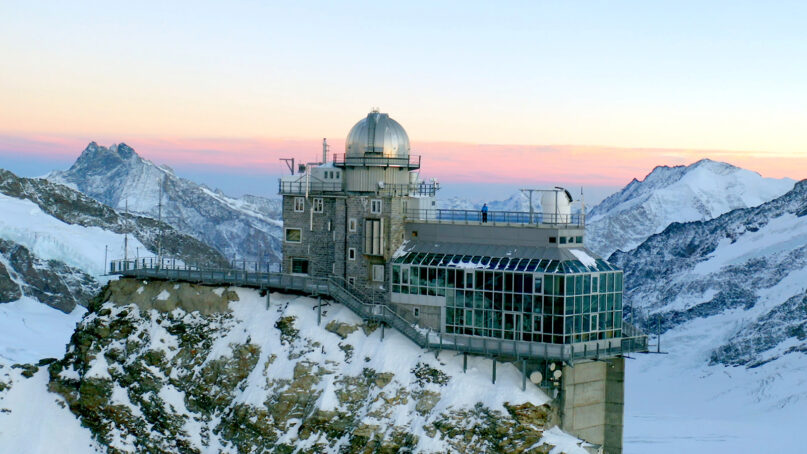(RNS) — Scientists and believers have had an uneasy relationship, often bordering on open hostility. Consider Richard Dawkins or Sam Harris.
But there is one scientist who manages to write about the intersection of science and spirituality in a nuanced, elegant and deeply respectful way. That’s Alan Lightman.
Those who haven’t read his 18-plus books (both fiction and nonfiction) now have a chance to watch his three-part series on public television, funded by the John Templeton Foundation and premiering Jan. 7.
Titled “SEARCHING: Our Quest for Meaning in the Age of Science,” Lightman takes viewers on a journey to answer the question: Where do human beings fit in the universe?
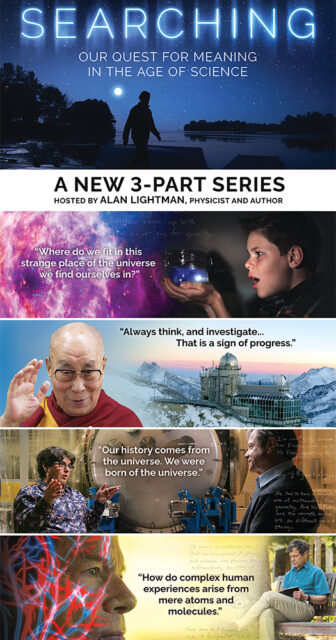
Poster for “SEARCHING: Our Quest for Meaning in the Age of Science” Courtesy image
Lightman, who was trained as a physicist and is now professor of the practice of the humanities at the Massachusetts Institute of Technology, interviews some of the brightest minds about the thorniest questions: How did life first emerge? Why are we here? What are the qualities that distinguish human beings? What is the nature of consciousness? Can science see or measure spiritual feelings?
He makes clear early on: He is a materialist. He does not believe in a supernatural God. As he says in the series: “I believe in the miraculous; not in miracles.”
But he is also open to spiritual experiences. And the series includes interviews with both the Dalai Lama and Lightman’s own rabbi, Michael Greenstein.
Lightman opens the three-part series with a transcendent experience he had several years ago when he lay at the bottom of a boat on a clear, dark night gazing up at the stars.
He then wonders if brain imaging can identify the kind of spiritual experience he had. From there begins to explore issues such as the composition of the universe, the Big Bang theory, the discovery of distant galaxies, gravitational waves and the nature of consciousness. The last episode explores how Homo sapiens might be moving beyond biology, transitioning into what he calls Homo techno.
Lightman appears as a kind of avuncular guide throughout the series, exploring his wide-ranging intellectual trek in an accessible, engaging and personal way.
RNS talked to Lightman via Zoom about the series, which will be available for streaming Saturday and begin airing on select PBS stations on Jan. 14. The interview was edited for length and clarity.
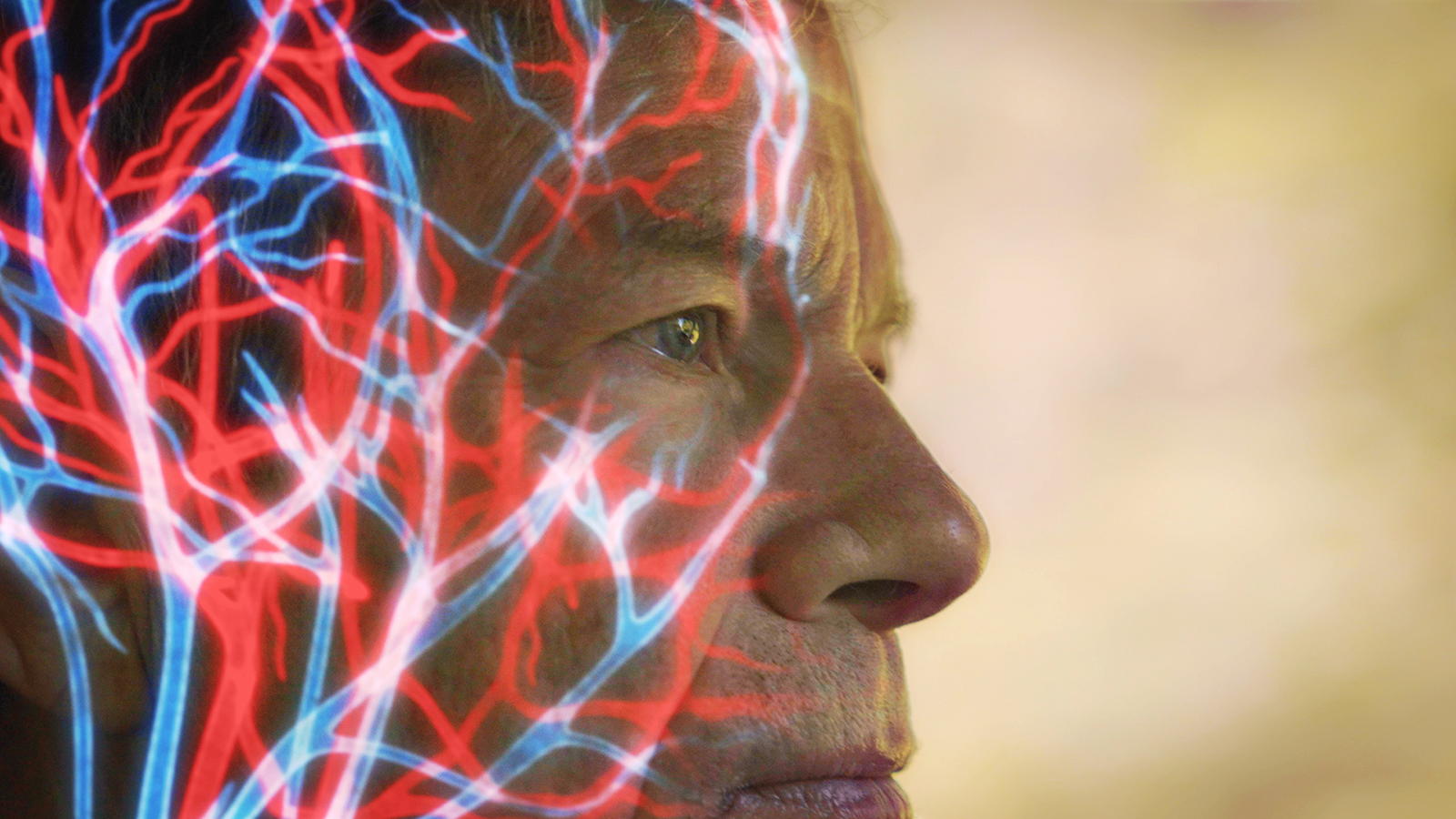
Computer graphics overlaid on Alan Lightman’s face visualize the long-standing debate as to whether life is only matter in motion, or has some non-material essence, in the series “SEARCHING: Our Quest for Meaning in the Age of Science.” Photo courtesy of SEARCHING
Was one of your motivations for the series educating people about science and scientific experiments?
For many years, I’ve been writing about the intersection of science and the humanities. I’ve been trying to make those connections in my books. I do agree there’s a gap in knowledge about science. A lot of people are fearful of science. Maybe they were never good at math. Or they know science has great power and there’s a limited number of people who control that power. Many people are suspicious or skeptical or anxious about science. So that’s one of the motivations.
You start out the series with a spiritual experience in a boat. What was the experience like?
My wife and I live on a small island in Maine in the summertime. My wife is an artist. I think of it as our spiritual center. Everybody on the island has their own boat because there are no roads or bridges or ferry service. I was coming back to our house late at night, after midnight. It was a clear night. The night was blazing with stars. I felt this urge to look up. I turned off the running lights of the boat. It got even darker. I turned off the engine and it got even more quiet. I was out in the ocean, and I lay down on my back and looked up. After a few moments I felt like I was merging with the stars or with something much larger than myself. I felt like time was compressed. There was no time. The infinite past and the infinite future were all compressed to a dot. I lost track of my body and of time and was just in this space of being joined with the cosmos. I think many people have similar experiences, maybe not out on a boat in the ocean. But a transcendent experience that transcends space and time.
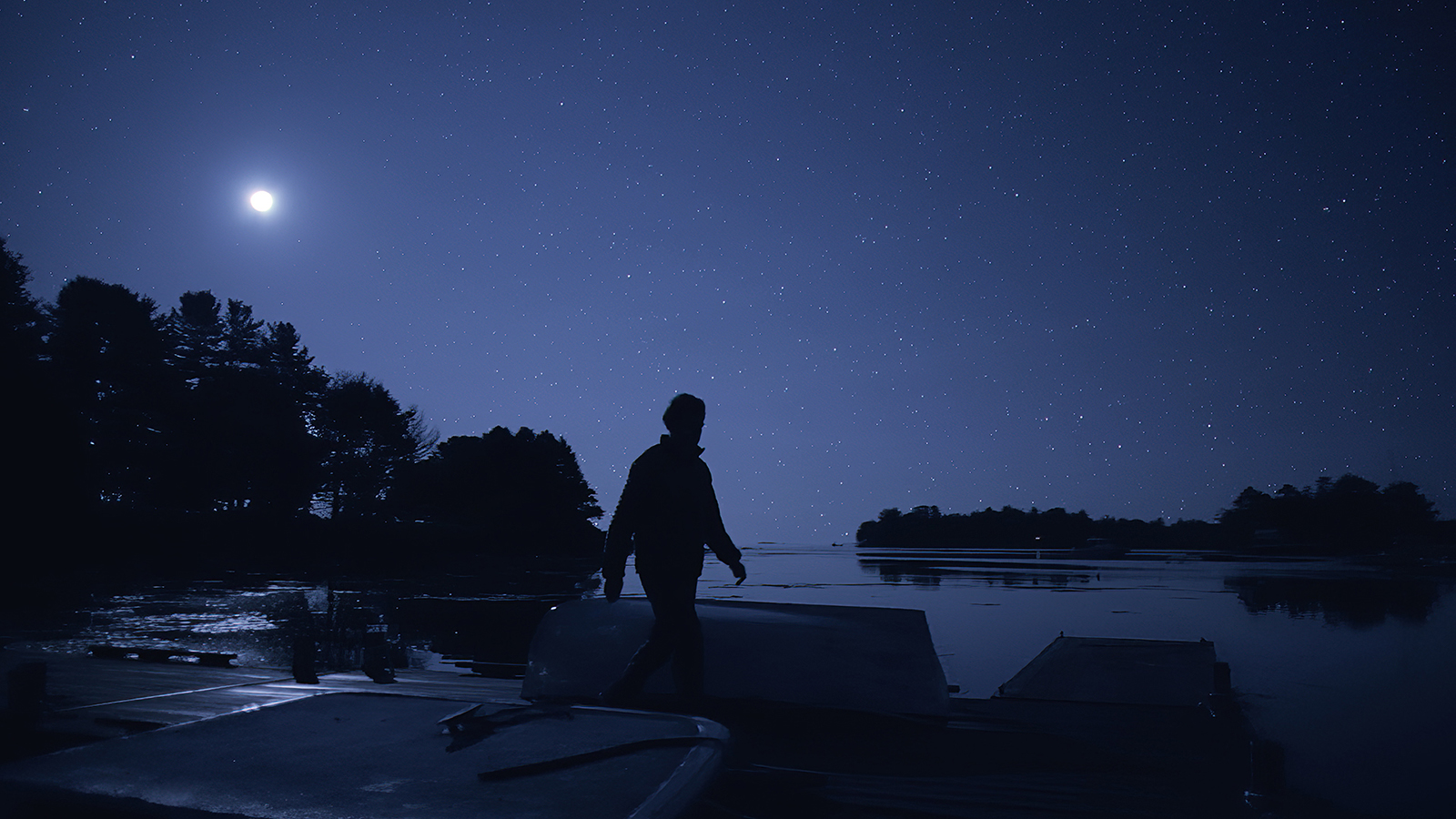
Alone, at night, on a boat, Alan Lightman feels himself merging with the stars. As a life-long “spiritual materialist” he sets off to look for answers in “SEARCHING: Our Quest for Meaning in the Age of Science.” Photo courtesy of SEARCHING
The series is an attempt to try to explore the scientific basis for the complicated experiences we have. Is that right?
One of the big ideas in the series is that we’re material. We’re made out of atoms and molecules. Episode 1 starts out with the Big Bang and shows how stars were eventually made. The stars made atoms that were spewed out into space. And then solar systems condensed out of that material — and eventually, life. There’s a lot of discussion of the fact that we are just material. If you start with the fact that we’re material, how can atoms and molecules produce these extraordinary experiences like the one I had in the boat, like falling in love, communing with wild animals? How do you explain that? Even though those experiences are rooted in the brain, science can’t fill in all the missing steps. It hasn’t been able to so far, and I’m skeptical as to whether it will ever be able to.
Brain scientist Robert Desimone did a scan of my brain when I was looking at an image very similar to what I saw in the boat. And he begins describing what he sees in the brain scan. And I asked if he could see the feelings I had? He said, no. He would probably say sometime in the future we can explain such feelings. But I’m not convinced. I think filling in all the missing steps is a challenge. Philosophers and neuroscientists and biologists would agree we don’t yet know how consciousness arises from material neurons. I call myself a spiritual materialist. I believe we are made out of atoms and molecules. But I also acknowledge and honor these spiritual experiences we have.
How do you define consciousness?
It’s a great question. There are levels of consciousness. Dolphins and crows who play and recognize themselves have some level of consciousness. So it’s a graded phenomenon. At the highest level, the manifestations of consciousness include a sense of self, a sense of things separate from the universe, a sense of ego, an ability to remember and plan for the future.
Having said that, consciousness is a sensation brought about by all of the chemical and electrical interactions of neurons. It’s the fundamental sensation of being alive at an advanced level. There are computer experts in artificial intelligence who attempt to define certain attributes of consciousness and then explore what a computer needs to do to exhibit those attributes. There are computer scientists who believe we will someday be able to make a computer that has all the attributes of consciousness. But you can never know what another person feels. To understand consciousness you’d have to know what another person feels, and that’s impossible. I don’t think we’ll ever know what it feels like to be a computer, a crow or a dolphin.
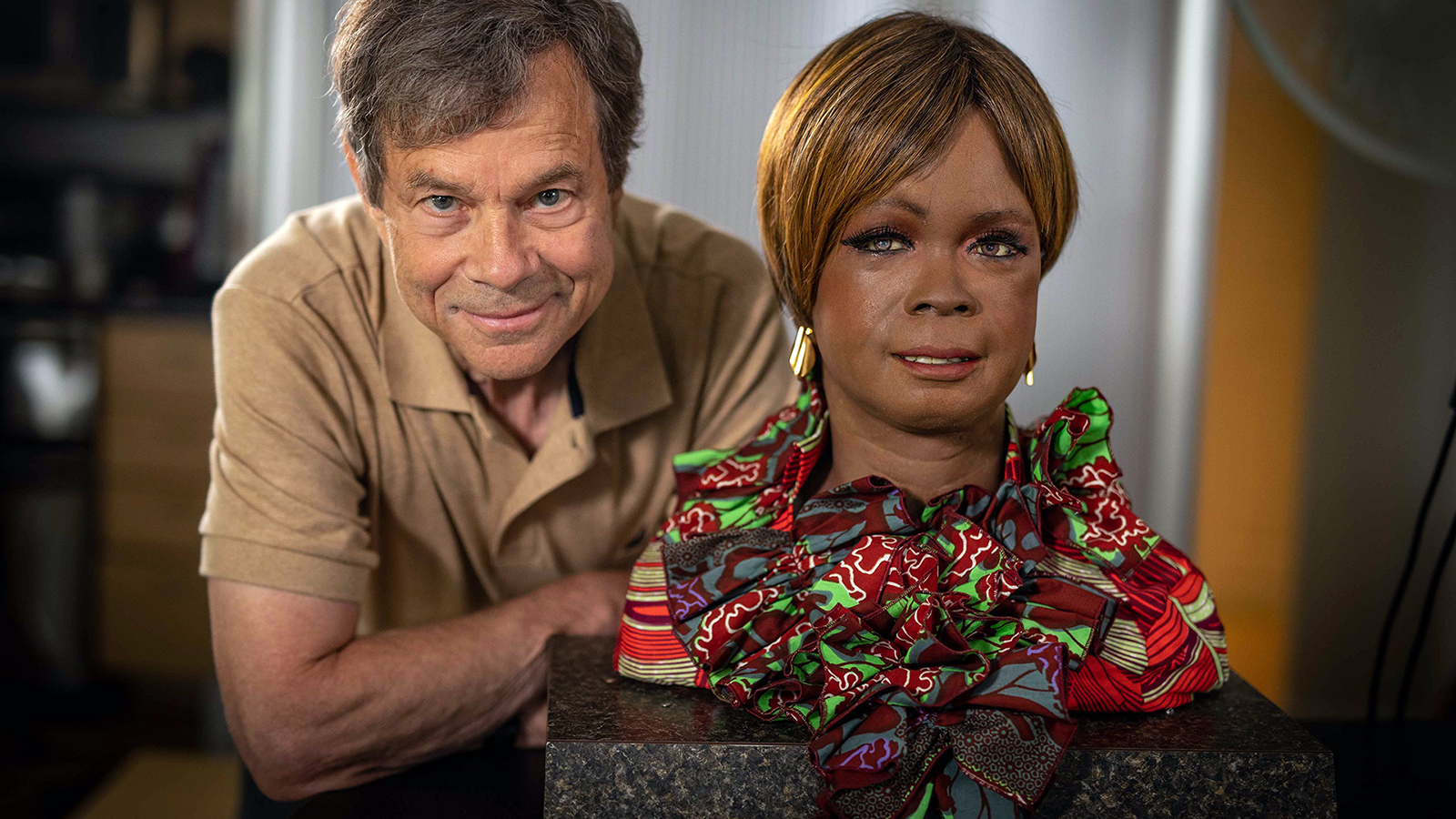
Alan Lightman, left, meets Bina48, one of Earth’s most advanced humanoid robots and one of the few African-American AIs on “SEARCHING: Our Quest for Meaning in the Age of Science.” Photo courtesy of SEARCHING
You say in the series that Homo sapiens are evolving into Homo techno. Explain that.
Homo techno is a creature that is part human and part machine. We’re already evolving to that point. It’s possible to put electrodes and computer chips into a human brain and have a person be able to control a robot arm by pure thought. I think at some point we will have computer chips in our brain that connect us directly to the internet, a frightening possibility.
When we have these devices that do things far faster and differently than the natural human brain, we’re going to be another species. Already, with our smartphones, the way people relate to each other is different than 25 years ago. Even though the smartphone is external and it’s not quite Homo techno, it’s the same kind of thing. Technology is changing who we are and how we relate to the world.
A question I raise in the series, which of course I can’t answer, is, How is that going to change humanity, our sense of dignity and ethics, the way we think about ourselves?
You have both the Dalai Lama and your rabbi appearing in the series. Do you identify with both Judaism and Buddhism?
I do. I’m a Reform Jew on the liberal end. I think Buddhism has a lot to offer, like being present in the world, mindfulness, not attaching your ego excessively to things you do. I’m also proud to be a Jew.
Do you feel you can be a bridge between the “New Atheists” and people of faith?
I’m just one person, and I can only do a tiny bit. But in a number of my books, that’s what I’m trying to do — to find a midway ground between nonbelievers and believers. I had a debate with Richard Dawkins five years ago. I think he has a very condescending attitude toward believers. I have opposed him in a couple of my books. I argue for the value of transcendent experiences and for the respect of believers. He’s a good debater, so it was pretty much a tie.
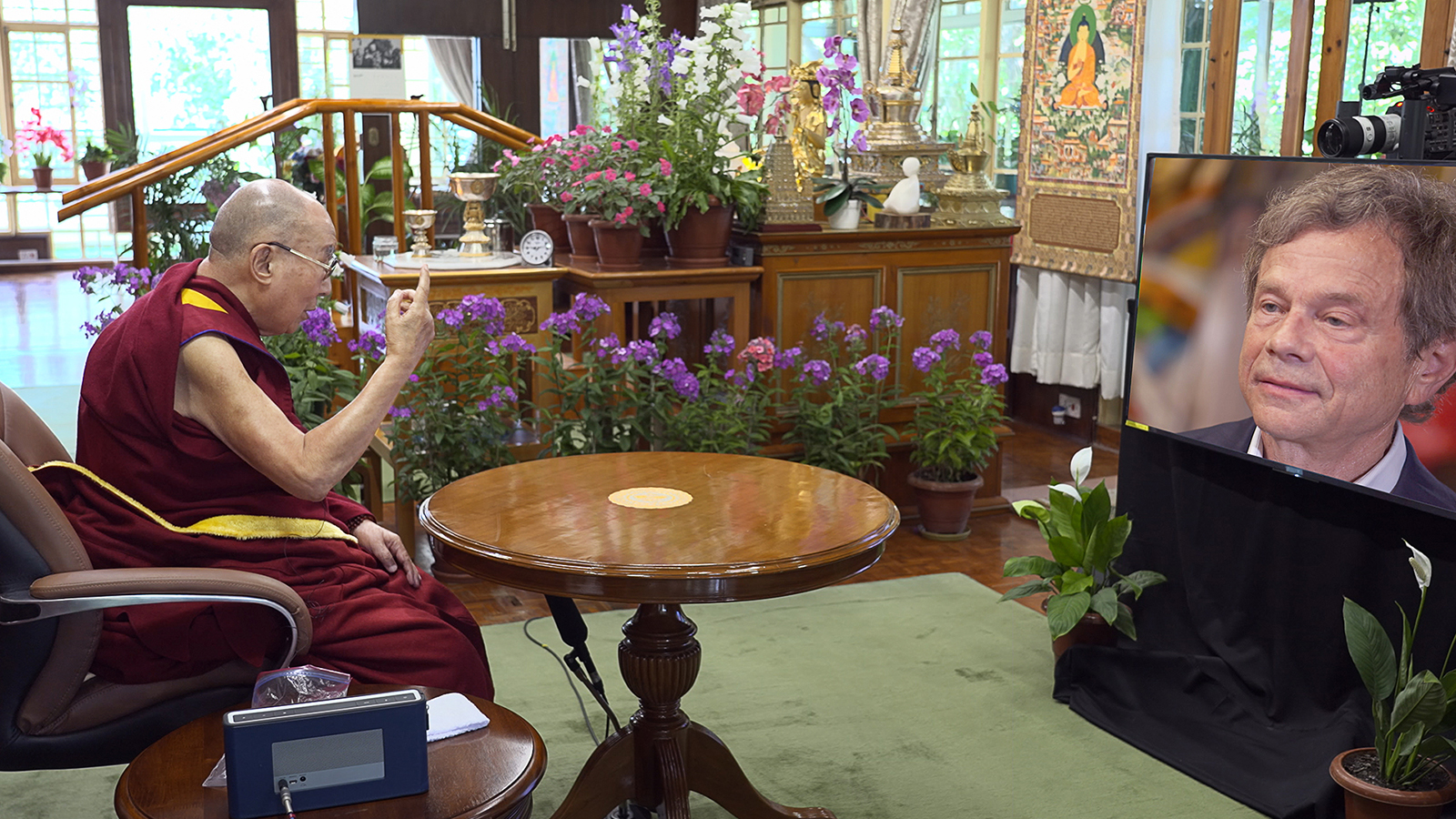
The Dalai Lama, left, suggests to Alan Lightman that consciousness is eternal and can never emerge from a computer or an advanced robot, in “SEARCHING: Our Quest for Meaning in the Age of Science.” Photo courtesy of SEARCHING
